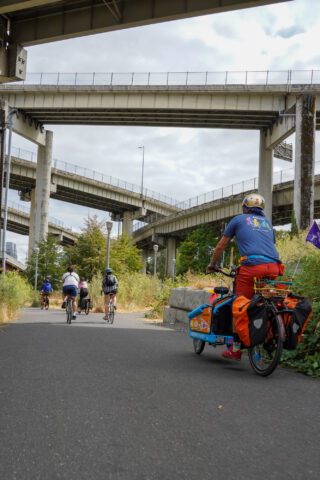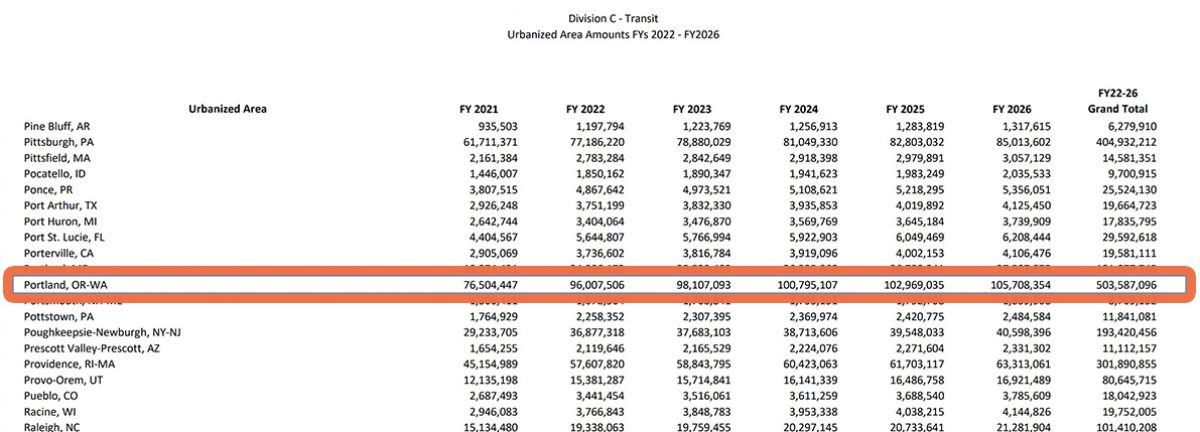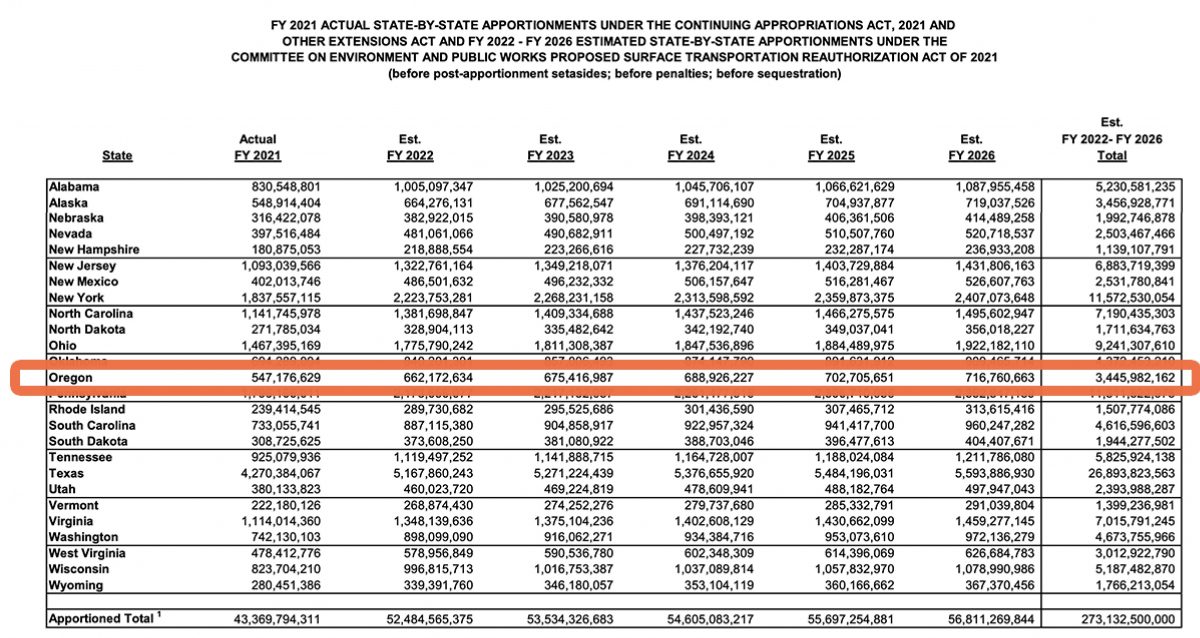
(Photo: Jonathan Maus/BikePortland)
While the fate of Biden’s two infrastructure spending bills remain very uncertain at this moment, one piece of the puzzle — a $1 trillion piece — passed the Senate earlier this month.

The piece that passed the Senate August 11th (with 19 Republican votes, including Mitch McConnell) will likely pass the House if and when it comes up for a vote. There’s simply too much interest among D.C. lawmakers to be part of “landmark bipartisan legislation” to let this opportunity pass by.
So what exactly is in the bill for Oregon and the Portland region?
I put that question to Oregon Department of Transportation Assistant Director Travis Brouwer. Brouwer said his team is still analyzing the bill but has already crunched some preliminary numbers.
Here’s how he said the bill would impact Oregon’s transportation system. Keep in mind, the figures below don’t include estimates for the main pot of bicycling and pedestrian-specific projects (Transportation Alternatives fund). Also not included below are estimates on how much Metro will get as part of their suballocation:
A total of about $1 billion in additional highway and special program formula funding for Oregon over the next 5 years — a nearly 40% increase in federal investment to preserve and improve the system. More than a quarter-billion dollars funding to preserve and replace our state’s aging bridges. The majority of ODOT’s bridges are over 50 years old — the age at which they should be heading toward retirement — so this investment will help us repair and replace these aging bridges. $52 million in funding for electric vehicle charging stations as well as $82 million for a new Carbon Reduction Program to help achieve our climate commitments. Advertisement
$94 million for a new program to enhance the transportation system’s resilience to disasters, including adapting to climate change. Significant increases in funding for local governments to invest in community priorities. Nearly $200 million in additional funding for public transportation. Significant investments in passenger rail that will provide opportunities to secure funds to improve service between Eugene and Portland (and on to Seattle and Vancouver, BC). A huge amount of discretionary grant funding that will offer opportunities to apply for key projects like the Rose Quarter, Interstate Bridge, and other priorities across the state. For example, the bill includes $1 billion for a Reconnecting Communities program to rectify historic harms caused by highway construction that could help with reconnecting the Albina neighborhood*. [Note: This program was slated for $50 billion before it was slashed in the amendment process prior to the vote.]
And here’s the year-by-year breakdown of transit money that would come to metro Portland:

And the total state-by-state apportionments from the Senate bill:

There’s a lot at stake here. If ODOT is responsible for this huge influx of funds, it will be more important than ever to make sure their leadership and governance is set up in a way that doesn’t result in us adding more capacity for fossil fuel-burning vehicles.
— Jonathan Maus: (503) 706-8804, @jonathan_maus on Twitter and jonathan@bikeportland.org
— Get our headlines delivered to your inbox.
— Support this independent community media outlet with a one-time contribution or monthly subscription.

